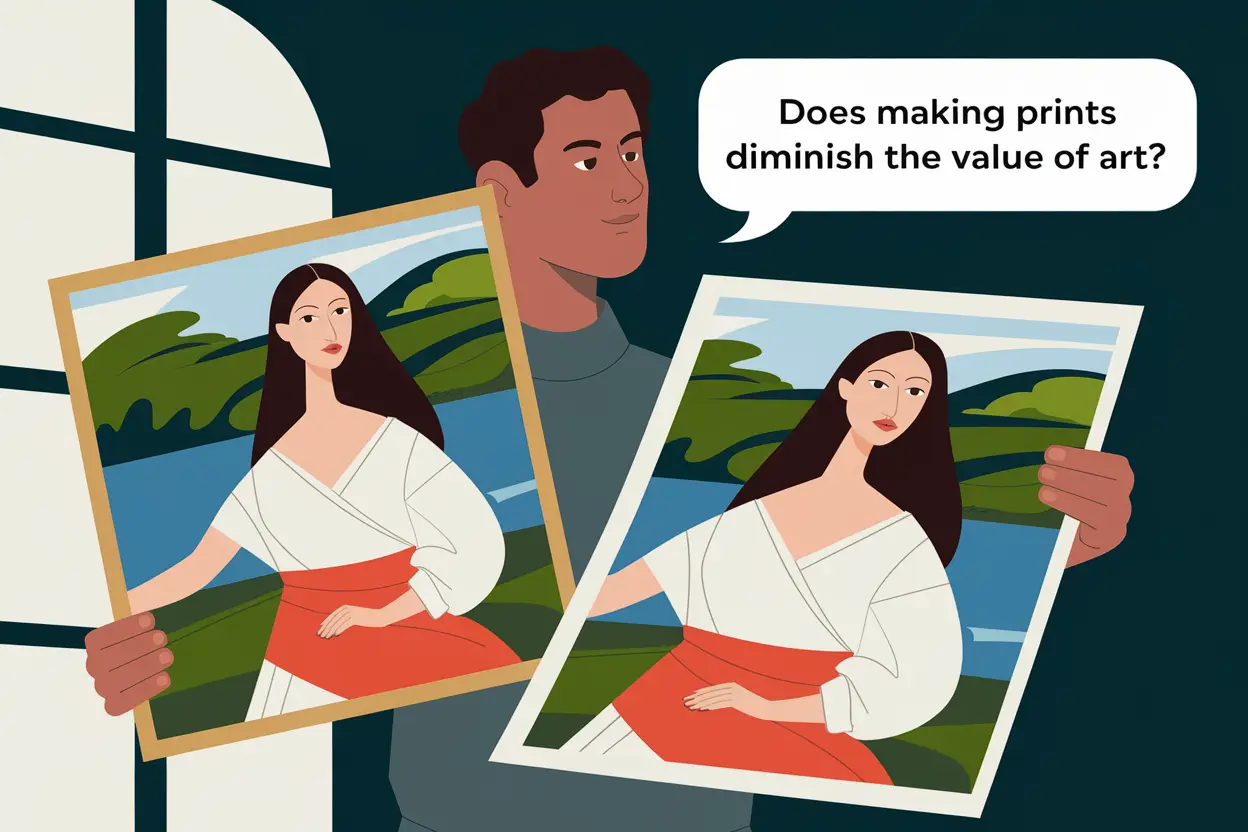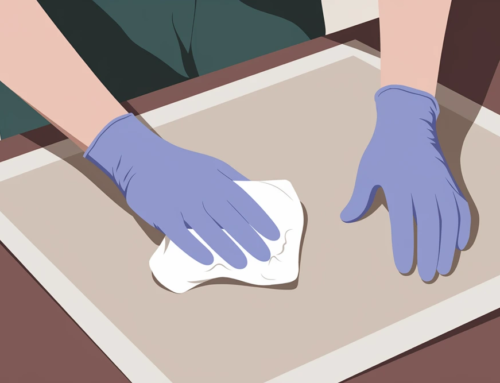The world of art is full of questions, and one of the most frequent is: does making prints take away from the value of original art? Many people worry that prints might lessen the uniqueness or worth of original pieces. However, the reality is far more interesting—prints and originals actually serve different roles, and prints can even boost an artist’s reach and reputation. So, how exactly do prints impact the value of originals, and what role do they play in the larger art landscape? Let’s explore these ideas in more detail.
Impact on Original Art Value
Contrary to some misconceptions, producing prints does not usually devalue the original artwork. In many cases, prints actually increase awareness of the artist and boost demand for their original pieces. Originals maintain their uniqueness and scarcity, which keeps their value high. Meanwhile, prints offer a more accessible option for art lovers who may not have the resources to purchase an original but still want to enjoy the artist’s work.
How Fame and Reputation Influence Print Value
The value of an artist’s prints is largely influenced by their reputation. Famous artists can command high prices for their prints due to various factors, such as:
-
Media Attention: Press coverage and critical acclaim often drive up the value of an artist’s prints.
-
Exhibition History: Prints by artists whose works have been featured in prestigious galleries or museums tend to be more valuable.
-
Market Demand: High demand for an artist’s work can elevate print prices.
-
Historical Significance: Artists who have made notable contributions to art history may see their prints appreciate over time.
However, an artist’s reputation is not static. Artists who are overlooked during their lifetime may gain recognition posthumously, increasing the value of their prints. Conversely, artists who fall out of favor might see their print values decline. Collectors should keep an eye on an artist’s career trajectory when considering print investments.
How Prints Influence Fame and Reputation
Prints, on the other hand, can significantly boost an artist’s fame and reputation by making their work more accessible to a broader audience. When an artist offers prints, their art reaches more people, including those who might not be able to afford original pieces. This increased exposure can lead to greater name recognition and a wider fan base.
Prints also help artists build a connection with new collectors. By offering a range of price points, prints allow more people to own a piece of an artist’s work, which can foster loyalty and long-term interest in their career. As more collectors and enthusiasts display an artist’s prints, word-of-mouth and visibility in different settings—like homes, offices, or even public spaces—can further enhance the artist’s reputation.
Different Types of Prints and Their Value
Prints vary widely in terms of their value in the art market:
-
Limited Edition Prints: These are often signed and numbered by the artist, making them more exclusive. Their scarcity tends to help retain some value, though they may not appreciate like original artworks.
-
Giclée Prints: These are high-quality reproductions that capture fine details and vibrant colors. However, since they can be easily reproduced, they are generally considered less valuable compared to limited editions or traditional printmaking techniques.
-
Traditional Printmaking Techniques: Prints made using methods like etching, engraving, and lithography are often seen as fine art. These prints, particularly when produced in small editions, are highly valued by collectors because of the craftsmanship involved and their limited nature.
Artists’ Considerations for Creating Prints
For artists, producing prints can be a strategic way to reach more collectors without compromising the value of their original works. Offering both originals and prints allows artists to cater to a wider audience, with limited edition prints providing a sense of exclusivity. However, transparency is key—artists should clearly communicate what makes a print special to avoid misleading buyers about its potential value. Differentiating prints through paper quality, size, or edition numbers can help maintain the exclusivity of certain works while providing more affordable options.
Conclusion
In summary, prints are a powerful tool for artists to expand their reach and for collectors to enjoy art in a more accessible way. Prints do not diminish the value of original artwork; instead, they add to an artist’s visibility, reputation, and market reach. By understanding the distinct roles of originals and prints, artists can cater to a broader audience without compromising the uniqueness of their original works, and collectors can make choices that reflect both their passion and investment considerations. Ultimately, prints and originals complement each other, enriching the art world and making art more inclusive for everyone.
The world of art is full of questions, and one of the most frequent is: does making prints take away from the value of original art? Many people worry that prints might lessen the uniqueness or worth of original pieces. However, the reality is far more interesting—prints and originals actually serve different roles, and prints can even boost an artist’s reach and reputation. So, how exactly do prints impact the value of originals, and what role do they play in the larger art landscape? Let’s explore these ideas in more detail.
Impact on Original Art Value
Contrary to some misconceptions, producing prints does not usually devalue the original artwork. In many cases, prints actually increase awareness of the artist and boost demand for their original pieces. Originals maintain their uniqueness and scarcity, which keeps their value high. Meanwhile, prints offer a more accessible option for art lovers who may not have the resources to purchase an original but still want to enjoy the artist’s work.
How Fame and Reputation Influence Print Value
The value of an artist’s prints is largely influenced by their reputation. Famous artists can command high prices for their prints due to various factors, such as:
-
Media Attention: Press coverage and critical acclaim often drive up the value of an artist’s prints.
-
Exhibition History: Prints by artists whose works have been featured in prestigious galleries or museums tend to be more valuable.
-
Market Demand: High demand for an artist’s work can elevate print prices.
-
Historical Significance: Artists who have made notable contributions to art history may see their prints appreciate over time.
However, an artist’s reputation is not static. Artists who are overlooked during their lifetime may gain recognition posthumously, increasing the value of their prints. Conversely, artists who fall out of favor might see their print values decline. Collectors should keep an eye on an artist’s career trajectory when considering print investments.
How Prints Influence Fame and Reputation
Prints, on the other hand, can significantly boost an artist’s fame and reputation by making their work more accessible to a broader audience. When an artist offers prints, their art reaches more people, including those who might not be able to afford original pieces. This increased exposure can lead to greater name recognition and a wider fan base.
Prints also help artists build a connection with new collectors. By offering a range of price points, prints allow more people to own a piece of an artist’s work, which can foster loyalty and long-term interest in their career. As more collectors and enthusiasts display an artist’s prints, word-of-mouth and visibility in different settings—like homes, offices, or even public spaces—can further enhance the artist’s reputation.
Different Types of Prints and Their Value
Prints vary widely in terms of their value in the art market:
-
Limited Edition Prints: These are often signed and numbered by the artist, making them more exclusive. Their scarcity tends to help retain some value, though they may not appreciate like original artworks.
-
Giclée Prints: These are high-quality reproductions that capture fine details and vibrant colors. However, since they can be easily reproduced, they are generally considered less valuable compared to limited editions or traditional printmaking techniques.
-
Traditional Printmaking Techniques: Prints made using methods like etching, engraving, and lithography are often seen as fine art. These prints, particularly when produced in small editions, are highly valued by collectors because of the craftsmanship involved and their limited nature.
Artists’ Considerations for Creating Prints
For artists, producing prints can be a strategic way to reach more collectors without compromising the value of their original works. Offering both originals and prints allows artists to cater to a wider audience, with limited edition prints providing a sense of exclusivity. However, transparency is key—artists should clearly communicate what makes a print special to avoid misleading buyers about its potential value. Differentiating prints through paper quality, size, or edition numbers can help maintain the exclusivity of certain works while providing more affordable options.
Conclusion
In summary, prints are a powerful tool for artists to expand their reach and for collectors to enjoy art in a more accessible way. Prints do not diminish the value of original artwork; instead, they add to an artist’s visibility, reputation, and market reach. By understanding the distinct roles of originals and prints, artists can cater to a broader audience without compromising the uniqueness of their original works, and collectors can make choices that reflect both their passion and investment considerations. Ultimately, prints and originals complement each other, enriching the art world and making art more inclusive for everyone.



